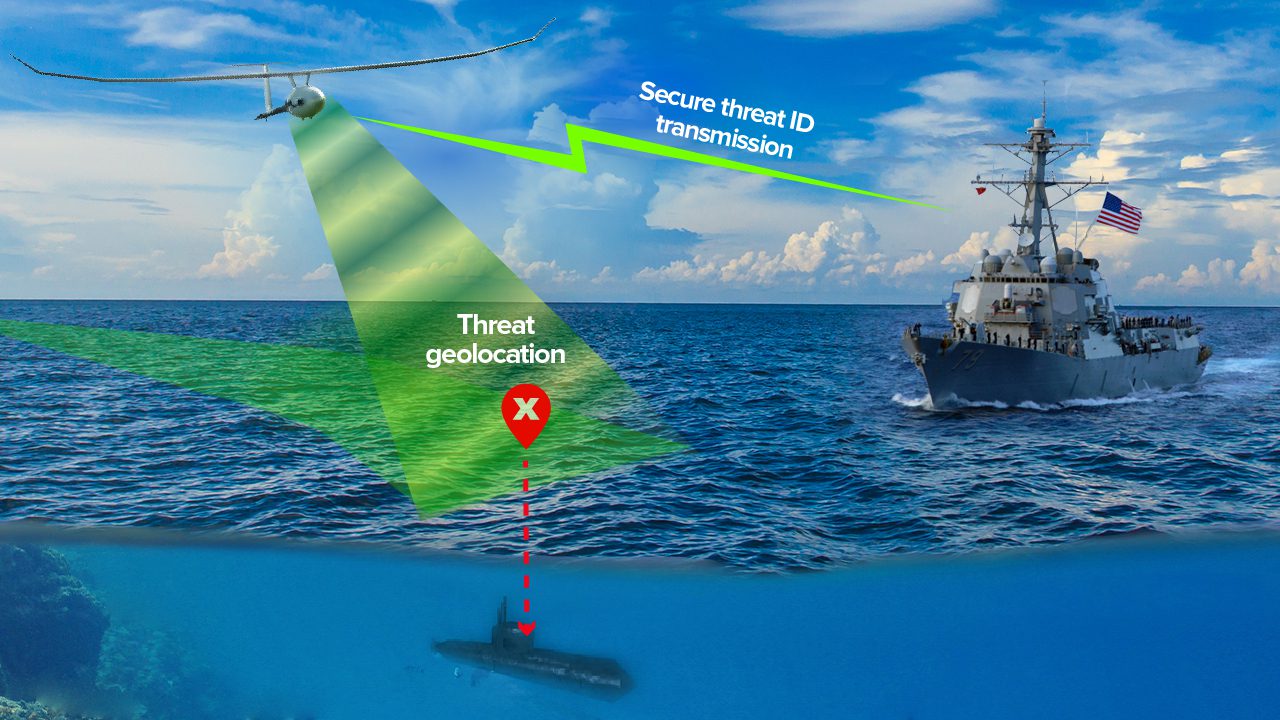Given the rise of stealthier and quieter submarines, current detection tools, which primarily focus on acoustic measurements, need an upgrade. Charles River Analytics won a nearly $1 million Small Business Innovation Research (SBIR) Phase II contract from the US Navy to develop an alternative system to detect submarines effectively using their magnetic signals.
The Magnetometer-based ASW Guidance for Naval Enhancement of Tactical Operations (MAGNETO) tool exploits the fact that a submarine is made of ferromagnetic materials and distorts the earth’s magnetic field in a way that a magnetic anomaly detection (MAD) sensor can detect and track. An added advantage is that magnetic signals do not depend on the medium they’re traveling through.
While the premise of measuring a submarine’s magnetic moment in antisubmarine warfare (ASW) is sound, the challenge lies in the fact that magnetic signals decrease cubically with distance, making them difficult to detect. Interference from other objects also poses a problem. Artificial intelligence (AI) and machine learning (ML) technologies help solve these challenges by effectively isolating and extracting relevant signals from the surrounding noise.
“The purpose of this project is to leverage advances in machine learning and signal processing to more reliably extract the signatures of these submarines and distinguish them from the magnetic signatures of other objects,” says Dr. Todd Jennings, Research Scientist at Charles River Analytics and Principal Investigator of MAGNETO.
Detecting the presence of magnetic fields alone is not enough. ASW techniques must also differentiate signals from submarines from those of large boats or even sunken shipping containers. This is where AI comes into play, helping to develop a distinct “signature” for submarine detection. Future iterations of MAGNETO will also be capable of analyzing wave noise to determine whether it indicates the presence of submarines.
MAGNETO tracks what is essentially a one-dimensional signal (a vessel’s “magnetic moment”) over time and compares it to previous detections. Charles River’s Vector Intelligence Build Environment (VIBE) workbench provides the 1D signal ML models that form the foundation for MAGNETO.
The tool follows a hierarchical approach, narrowing down the process of identification in successive stages. The first stage detects the presence of a submarine, the second stage determines the type of submarine—such as nuclear missile, diesel—continuing until a precise identification is made. This hierarchical system allows MAGNETO to rapidly process information in real time, ensuring only relevant data passes the initial screening and advances to subsequent stages.
Before reaching the classifier stage, MAGNETO first cleans the signals, removing any noise. In the second stage, a feature extractor selects only critical parts of the signal that may indicate activity. The classifier forms the final layer of analysis.
“The biggest advantage of MAGNETO is that it allows us to detect ultra-low-noise submarines reliably, quickly, and efficiently while minimizing risk to the warfighter,” Jennings says.
Other use cases for the tool can include detecting airplane wreckage, underground power cables, and dropped shipping containers in the ocean. An additional advantage is that lessons from MAGNETO and the VIBE workbench can translate to other signals, including acoustic, LIDAR, and radio frequency.
Contact us to learn more about MAGNETO and our other capabilities in computer vision and perception, and navigation and localization.
This material is based upon work supported by the Naval Air Warfare Center under Contract No. N68335-24-C-0230. Any opinions, findings and conclusions or recommendations expressed in this material are those of the author(s) and do not necessarily reflect the views of NAVAIR.





